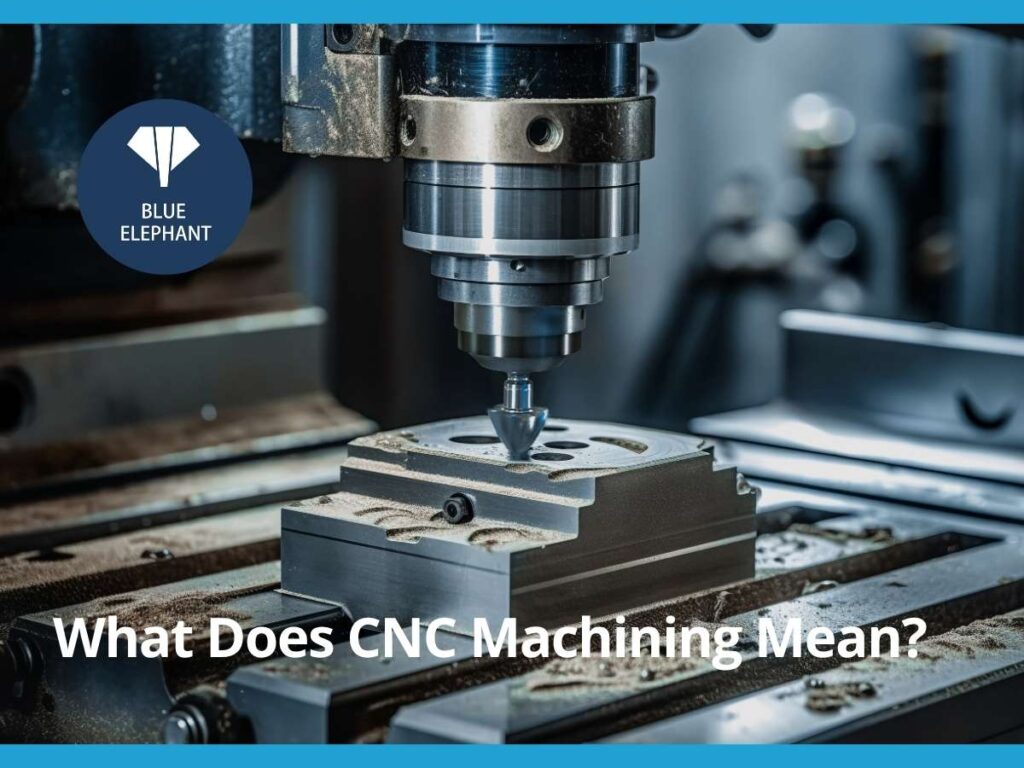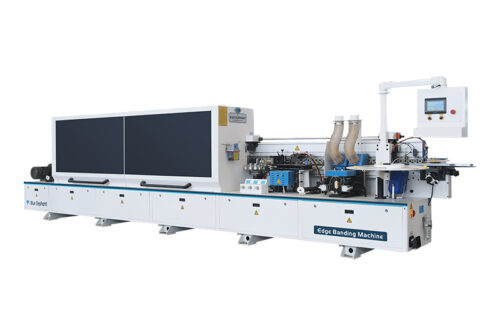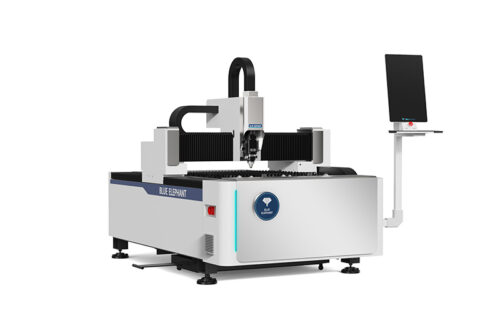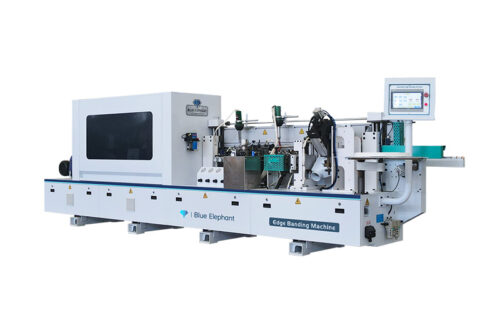The first time I saw a CNC machine at work, I couldn’t believe my eyes. A block of metal went in, and minutes later, out came a perfect part—every cut precise, every detail flawless.
I was hooked. How did this machine know exactly what to do? How could it carve something so complex without a human touch?
If you’re asking yourself, “What does CNC machining mean?” I get it. I was there once, too. I’ve spent years working with these machines, learning how they turn raw materials into finished products.
And I’m here to make it simple for you.
This article will explain CNC machining in a way that makes sense. No technical overload, no complicated explanations—just a clear, straightforward guide to help you understand what it is, how it works, and why it matters.
By the end, you won’t just know what CNC machining means—you’ll understand why it’s everywhere.
So let’s start!
1. What is CNC Machining?
Have you ever watched a craftsman shape a piece of metal by hand? It takes skill, patience, and years of experience. Now imagine a machine that can do it automatically—faster, with perfect accuracy, and without getting tired. That’s CNC machining.
Defining CNC Machining
CNC stands for Computer Numerical Control. It’s a process where computers control machine tools to shape materials like metal, plastic, and wood. Instead of a person manually cutting, drilling, or shaping, CNC machines follow precise digital instructions to do the work automatically.
Think of it like a 3D printer—but instead of adding layers of material, CNC machines remove material to create the final shape.
How CNC Machining Automates Manufacturing
Traditional machining requires an operator to guide the tool. CNC machining changes that by using a pre-programmed code (often written in G-code) to tell the machine exactly where to cut, drill, or shape.
Here’s how it works:
- A Digital Design is Created: This could be a CAD (Computer-Aided Design) file that defines the shape of the part.
- The CNC Machine Interprets the Code: The machine reads the programmed instructions, translating them into precise movements.
- Material is Cut with Extreme Precision: Whether it’s a milling machine, lathe, or laser cutter, CNC ensures every detail is executed exactly as planned.
Why CNC Machining Matters
For industries that rely on consistency and accuracy, CNC machining is a game-changer. Here’s why:
- Precision: CNC machines can cut with tolerances as tight as 0.001 inches (about the thickness of a human hair).
- Repeatability: Whether it’s the first or thousandth part, CNC machining delivers identical results.
- Efficiency: Once programmed, CNC machines work continuously, reducing labor costs and increasing output.
If you’re in manufacturing, fabrication, or machine repair, CNC machining isn’t just a tool—it’s a game-changer. It turns designs into reality with speed and precision that manual work simply can’t match.
So if you are looking for a reliable CNC manufacturer, consider Blue Elephant. We offer high-performance machines at competitive prices, often delivering better durability and stability than competitors in the same price range.
2. How Does CNC Machining Work?
The first time I watched a CNC machine run, I expected it to be complicated—endless switches, dials, and manual adjustments. But once I understood the process, I realized it all followed a clear, step-by-step workflow.
If you’re wondering how CNC machining actually works, let’s walk through it together.
The Basic Process of CNC Machining
Every CNC-machined part starts with an idea. That idea is then turned into a design, programmed into a machine, and precisely cut into shape. Here’s how it happens:
- A CAD File is Created: Everything starts with a Computer-Aided Design (CAD) file. Engineers use software like AutoCAD or SolidWorks to create a 3D model of the part. This design includes exact measurements, hole placements, and material specifications.
- The Design is Converted to a CNC Program: A Computer-Aided Manufacturing (CAM) system translates the CAD model into machine-readable instructions. These instructions, often in G-code, tell the CNC machine exactly where to move, how fast to cut, and which tools to use.
- The Machine is Set Up: An operator loads the raw material—whether it’s metal, plastic, or wood—onto the machine. The correct cutting tools, like drills, mills, or lathes, are installed based on the project’s needs.
- The CNC Machine Executes the Program: Once everything is in place, the CNC machine follows the programmed instructions, making precise cuts, drilling holes, and shaping the material exactly as designed. The operator monitors the process, but the machine does the work.
- Quality Inspection and Finishing: After machining, the finished part goes through quality control. This might include visual inspections, measuring with calipers or coordinate measuring machines (CMMs), and final surface finishing like polishing or coating.
A well-machined part means nothing if it doesn’t meet quality standards, making inspection and finishing the final, crucial step.

3. Types of CNC Machining
Walking into a machine shop, you’ll see different types of CNC machines, each designed for specific tasks. Some carve out intricate details, while others slice through thick metal sheets in seconds. Choosing the right one depends on what you need to do.
So, what are the main types of CNC machines, and what do they do? Let’s break it down.
CNC Milling Machines
CNC milling machines use rotating cutting tools to remove material from a solid block. They can move along multiple axes, allowing for complex shapes and detailed features. Industries that require high-precision components, like aerospace and automotive, rely on milling machines for their accuracy and versatility.
- Best For: Machining flat surfaces, drilling holes, and creating detailed cuts.
- Common Uses: Metal fabrication, automotive parts, and aerospace components.
- Why It Matters: When precision and repeatability are critical, a CNC mill gets the job done.

CNC Lathes
CNC lathes work by rotating the material at high speeds while cutting tools shape it. This method is ideal for producing symmetrical, cylindrical parts with smooth finishes. Lathes are widely used in the production of shafts, fasteners, and mechanical components where consistency is key.
- Best For: Shafts, screws, bolts, and pipes.
- Common Uses: Aerospace, automotive, and mechanical engineering industries.
- Why It Matters: If a part needs perfect symmetry and a smooth finish, CNC lathes make it possible.

CNC Plasma Cutters
Plasma cutters use an electrically charged gas to create a superheated plasma arc that slices through metal. This process is extremely fast and effective, making it a preferred choice for fabricators who need clean, precise cuts on thick metal sheets. Unlike laser cutters, plasma is more cost-effective for heavy-duty applications.
- Best For: Cutting conductive metals like steel and aluminum.
- Common Uses: Structural steel, automotive frames, and industrial fabrication.
- Why It Matters: A CNC plasma cutter combines speed and power, making it ideal for high-production environments.

CNC Laser Cutters
Laser cutters use a focused beam of light to cut through materials with extreme precision. The process generates minimal heat-affected zones, preventing material warping and allowing for intricate detailing. This makes laser cutting an excellent choice for industries needing highly detailed and delicate work, such as electronics and jewelry manufacturing.
- Best For: Thin materials that require intricate detailing.
- Common Uses: Jewelry, electronics, medical devices, signage.
- Why It Matters: Laser cutting provides flawless edges with minimal material waste.

CNC Routers
CNC routers function similarly to milling machines but are optimized for non-metal materials like wood, plastic, and foam. They move at high speeds, making them ideal for carving, engraving, and shaping decorative elements. Furniture makers, sign manufacturers, and mold designers frequently use CNC routers for their ability to create intricate and artistic designs.
- Best For: Engraving, carving, and cutting softer materials.
- Common Uses: Furniture, signs, mold making, and decorative panels.
- Why It Matters: A CNC router is a go-to tool for businesses that need fast, precise cuts in non-metal materials.
Whatever type of CNC machines you need for your business, Blue Elephant specializes in manufacturing CNC machines known for their precision, efficiency, and customization.

4. Key Components of a CNC Machine
A CNC machine might look like a single unit, but it’s actually a system of carefully designed components working together. Each part plays a role in transforming raw material into a finished product. If even one component isn’t working properly, it can throw off the entire machining process.
So, what are the essential parts of a CNC machine, and why do they matter? Let’s break it down.
Control Panel
The control panel is where all CNC commands are input and managed. Operators use this interface to load programs, set parameters, and monitor the machining process. Modern control panels often include touchscreens, physical buttons, and keypads for quick adjustments.
- What It Does: Processes G-code, manages machine movement, and provides real-time monitoring.
- Why It Matters: Without the control panel, there’s no way to communicate instructions to the machine.
Think of it as the cockpit of an airplane—everything is controlled from here, and a skilled operator knows exactly how to adjust settings for the best results.
Spindle and Cutting Tools
The spindle is the rotating component that holds the cutting tool. It determines the speed, force, and precision of the cutting process. Different tools—such as drills, end mills, or turning tools—are attached to the spindle, depending on the job.
- What It Does: Rotates cutting tools at high speeds to shape the material.
- Why It Matters: The spindle’s power and speed directly impact the accuracy and finish of the part.
Imagine using a dull knife to cut a steak—it won’t be clean or efficient. The same applies to CNC spindles and tools; the right tool makes all the difference.
Linear and Rotational Axes
CNC machines operate along multiple axes to control movement. Some machines work on three axes (X, Y, and Z), while others have four or five axes for more complex cuts and angles.
- What It Does: Determines the direction and flexibility of movement.
- Why It Matters: More axes mean greater precision and the ability to machine intricate designs.
A basic 3-axis machine moves left-right, front-back, and up-down, while a 5-axis machine can tilt and rotate, allowing for more advanced machining.
Workholding Devices:
For precision cutting, the material must be held firmly in place. Workholding devices such as vises, clamps, and fixtures prevent shifting or vibrations that could ruin a cut.
- What It Does: Holds the material steady during machining.
- Why It Matters: Even the smallest movement can cause errors, wasted material, and rework.
If you’ve ever tried to drill a hole in a moving object, you know how frustrating it can be. The same principle applies to CNC machining—stability is everything.
Cooling and Lubrication System
CNC machines generate heat due to friction. Without a proper cooling and lubrication system, tools can overheat, dull, or even break, leading to poor-quality cuts and shorter tool life.
- What It Does: Cools and lubricates cutting tools to reduce wear and tear.
- Why It Matters: Prevents overheating, extends tool life, and improves surface finish.
A good cooling system is like an air conditioner for your CNC machine—it keeps everything running smoothly and prevents overheating issues.
5. Applications of CNC Machining in Different Industries
CNC machining is everywhere, even in places you might not expect. Whether it’s the aerospace sector producing lightweight parts or a small business crafting custom furniture, CNC technology plays a vital role in precision, efficiency, and scalability.
For businesses looking to invest in CNC machining, the key question is: How does this technology fit into your industry? Let’s break it down.
B2B Applications (For Agents: Machine Dealers, Spare Parts Dealers, Repairers, Rental Companies)
Companies that deal with industrial machinery, repairs, or parts supply depend on CNC machining to meet their customers’ demands. Here’s how it applies in major sectors:
- Manufacturing Industry: CNC machining is the backbone of modern manufacturing, producing everything from screws to complex mechanical assemblies. With its ability to cut with high accuracy and repeatability, manufacturers can scale production without sacrificing quality.
- Aerospace Industry: Aircraft components must be precise, durable, and lightweight, making CNC machining essential for aluminum, titanium, and composite parts. From turbine blades to landing gear, aerospace manufacturers trust CNC technology for strict quality standards.
- Automotive Industry: Every car on the road has CNC-machined parts. CNC machining creates engine blocks, transmission components, and intricate metal parts that require high precision. It also enables custom aftermarket modifications.
B2C Applications (For Terminal Users: Furniture, Advertising, Mold Design, Crafts, etc.)
CNC machining isn’t just for large-scale manufacturers. It’s also used by craftsmen, artists, and small businesses to create custom products with precision and efficiency.
- Furniture Industry: CNC routers have transformed woodworking, allowing businesses to create intricate furniture designs and detailed cabinetry at scale. Custom orders, which once took weeks, can now be completed in days.
- Signage & Advertising: Precision Lettering and Graphics: From store signs to LED display boards, CNC machines—especially laser cutters and routers—are widely used to create signage with precise lettering and custom shapes.
- Mold Making & Production: Shaping Precision Molds: CNC milling is widely used to produce molds for injection molding, casting, and forming. These molds must be durable and highly accurate, as even a small defect can impact the final product.
- Craft and DIY Projects: Personalized Designs: Hobbyists and artists use CNC machines for engraving, carving, and precision cutting. Whether it’s engraving custom jewelry or cutting intricate wood designs, CNC allows for consistent, high-quality results.
6. Common Challenges in CNC Machining and How to Overcome Them
CNC machining has revolutionized manufacturing, but like any technology, it comes with challenges. From high upfront costs to programming complexity, businesses must navigate these hurdles to make the most of their investment.
If you’re considering CNC machining, what obstacles might you face? And more importantly, how can you overcome them without disrupting your workflow? Let’s break it down.
| Problem | Solution |
| High Initial Cost | Consider second-hand or rental machines; Calculate ROI to see long-term savings; Lease options can reduce financial strain. |
| Programming Complexity | Use beginner-friendly CAD/CAM software like Fusion 360; Invest in operator training; Utilize AI-driven programming tools. |
| Machine Wear and Maintenance | Follow routine maintenance schedules; Monitor key replacement parts like spindles, cutting tools, and bearings; Replace parts before failure. |
| Material Compatibility Issues | Match the right CNC machine to the material type; Adjust tool speed, cutting force, and cooling methods accordingly. |
| Tool Breakage | Use high-quality cutting tools; Adjust feed rate and spindle speed; Implement proper cooling and lubrication. |
| Inconsistent Precision | Calibrate the machine regularly; Check for loose components; Use high-accuracy measuring tools for inspection. |
| Heat Buildup During Machining | Optimize cutting speeds; Use proper cooling techniques such as mist or flood lubrication; Select heat-resistant materials. |
| Chip Accumulation | Use appropriate chip evacuation systems; Adjust cutting parameters to improve chip breaking; Regularly clean the work area. |
| Software or G-Code Errors | Verify program code before running; Use simulation tools to detect errors; Keep software updated. |
| Machine Downtime | Have a preventive maintenance schedule; Stock essential spare parts; Train operators to troubleshoot common issues. |
Every CNC process comes with obstacles, but with the right strategies, they can be managed efficiently. Investing in training, maintenance, and proper machine selection will help your business stay productive and profitable.
7. Future Trends in CNC Machining
I remember when CNC machining was all about manual programming, constant monitoring, and endless trial and error. Back then, every adjustment had to be done by hand, and a single mistake could ruin an entire batch of parts. But today? Things are changing—fast.
If you’re in CNC machining industry, staying ahead isn’t just an advantage—it’s a necessity. Let’s look at the future and what it means for you.
AI and Automation in CNC
Artificial intelligence (AI) is transforming CNC machining, making processes more efficient, predictive, and automated. Instead of waiting for breakdowns, manufacturers are now using predictive maintenance—where AI monitors wear and tear, alerting operators before a failure occurs.
- Self-Optimizing Machines: AI can adjust cutting speeds and tool paths in real-time, improving accuracy and reducing material waste.
- Automated Quality Control: Sensors detect deviations and correct them without human intervention, minimizing defects.
- Faster Setup Times: AI-powered CAM software can generate toolpaths faster and with greater accuracy, reducing programming time.
One manufacturer told me that after integrating AI into their CNC workflow, their machine downtime dropped by 30%—a huge cost savings over time.
Advancements in Multi-Axis Machining
CNC machining is no longer limited to just three axes (X, Y, Z). Multi-axis machining—such as 4-axis, 5-axis, and even 7-axis systems—allows for more complex geometries and reduced setups.
- Fewer Machine Setups: Parts that once required multiple setups can now be machined in a single run, saving time.
- Improved Surface Finish: Multi-axis machines can approach surfaces from multiple angles, reducing post-processing work.
- More Design Freedom: Manufacturers can create organic shapes, undercuts, and intricate internal features that were once impossible.
Integration with 3D Printing
CNC machining and additive manufacturing (3D printing) were once seen as separate processes, but now they’re coming together to create hybrid manufacturing solutions.
- 3D Printing for Rapid Prototyping: Manufacturers can print prototype parts before committing to CNC machining, reducing material waste.
- CNC Finishing for Precision: 3D-printed parts can be refined and finished using CNC machines for greater accuracy and strength.
- Multi-Material Manufacturing: Hybrid machines allow metal and plastic components to be printed and machined in the same setup.
A contact in aerospace told me they use 3D printing for lightweight parts and CNC machining to refine them—saving both time and material.
Eco-Friendly Machining Solutions
Sustainability is becoming a major focus in CNC machining as industries seek to reduce waste, energy use, and environmental impact.
- Energy-Efficient CNC Machines: Newer models consume less power while maintaining high-speed performance.
- Recyclable Materials: Manufacturers are shifting to recycled metals and biodegradable composites.
- Coolant & Lubricant Innovations: Water-based and synthetic coolants are replacing oil-based solutions, reducing chemical waste.
A machine shop I visited last year switched to a closed-loop coolant system. They cut disposal costs by 40%, and their machines ran smoother with fewer maintenance issues.

Conclusion
CNC machining means more than just automation—it means faster production, tighter tolerances, and better business outcomes.
In this guide, we’ve broken down how CNC machines work, what they’re used for, and where the industry is headed.
Whether you’re in woodworking or metal fabrication, CNC machining helps you scale without compromising quality.
At Blue Elephant, we help manufacturers and small shops upgrade their capabilities with high-performance CNC machines built for real-world needs.
Ready to make precision a priority? Contact us today!
Explore More of Our Resources
We’ve got more for you! These articles provide more tips and guidance to keep you on track:
Still haven’t found what you’re looking for? Don’t hesitate to contact us. We’re available around the clock to assist you.













